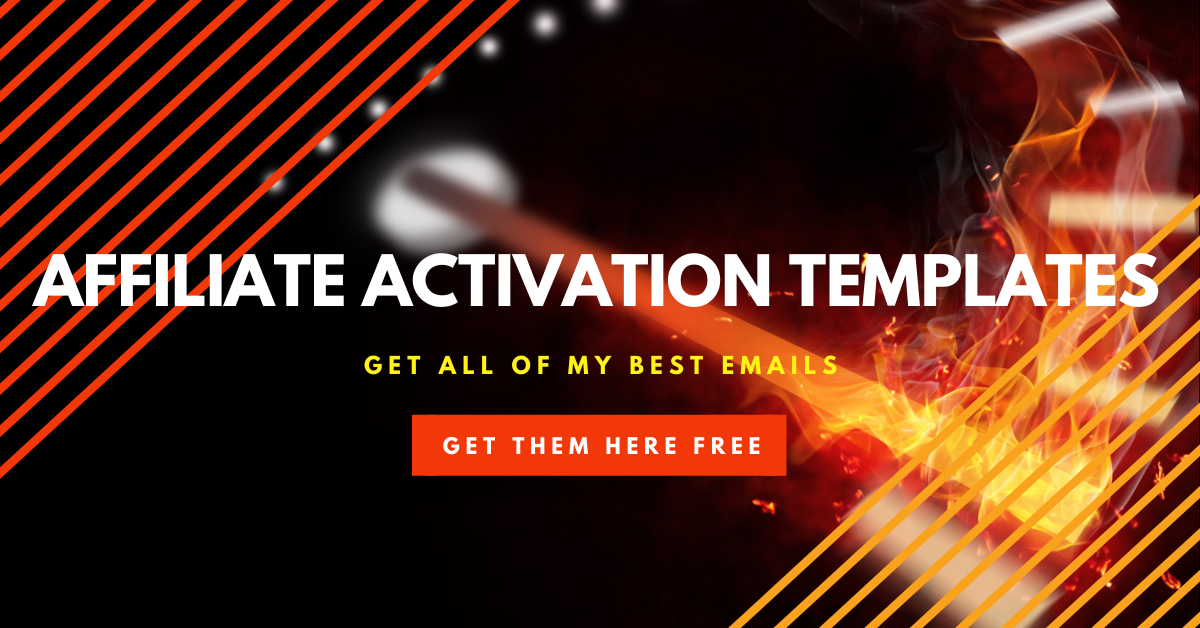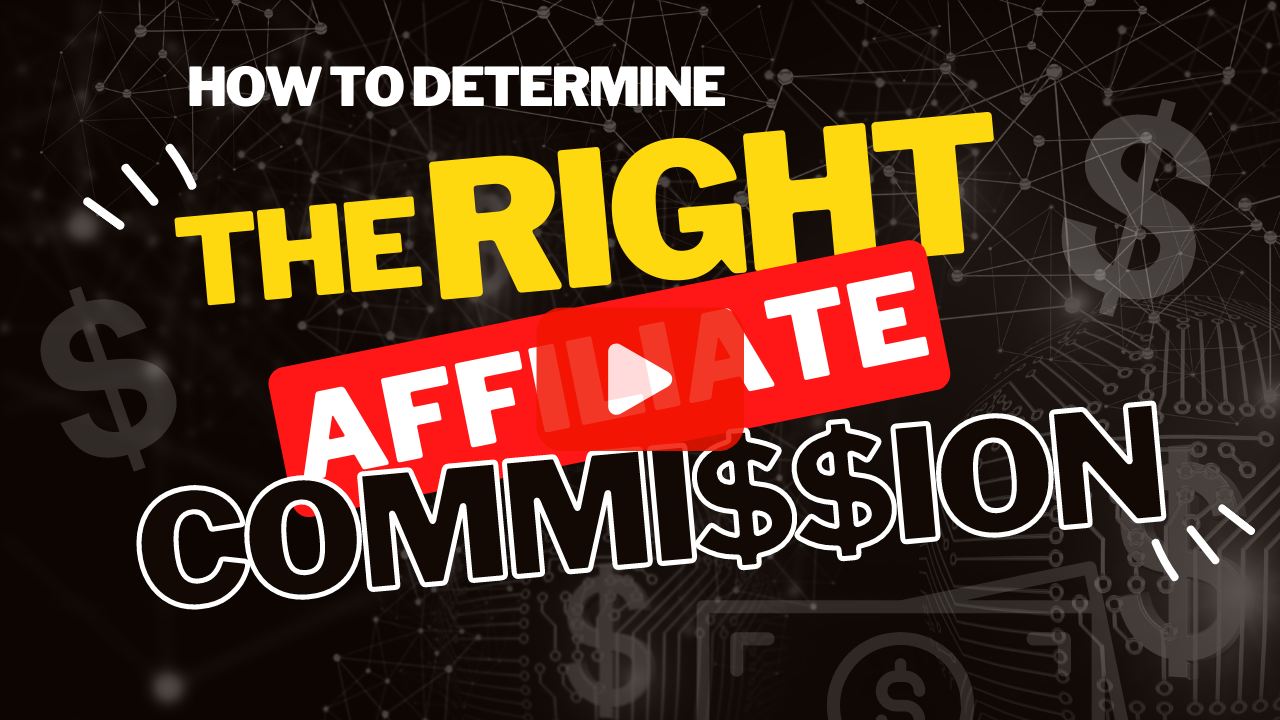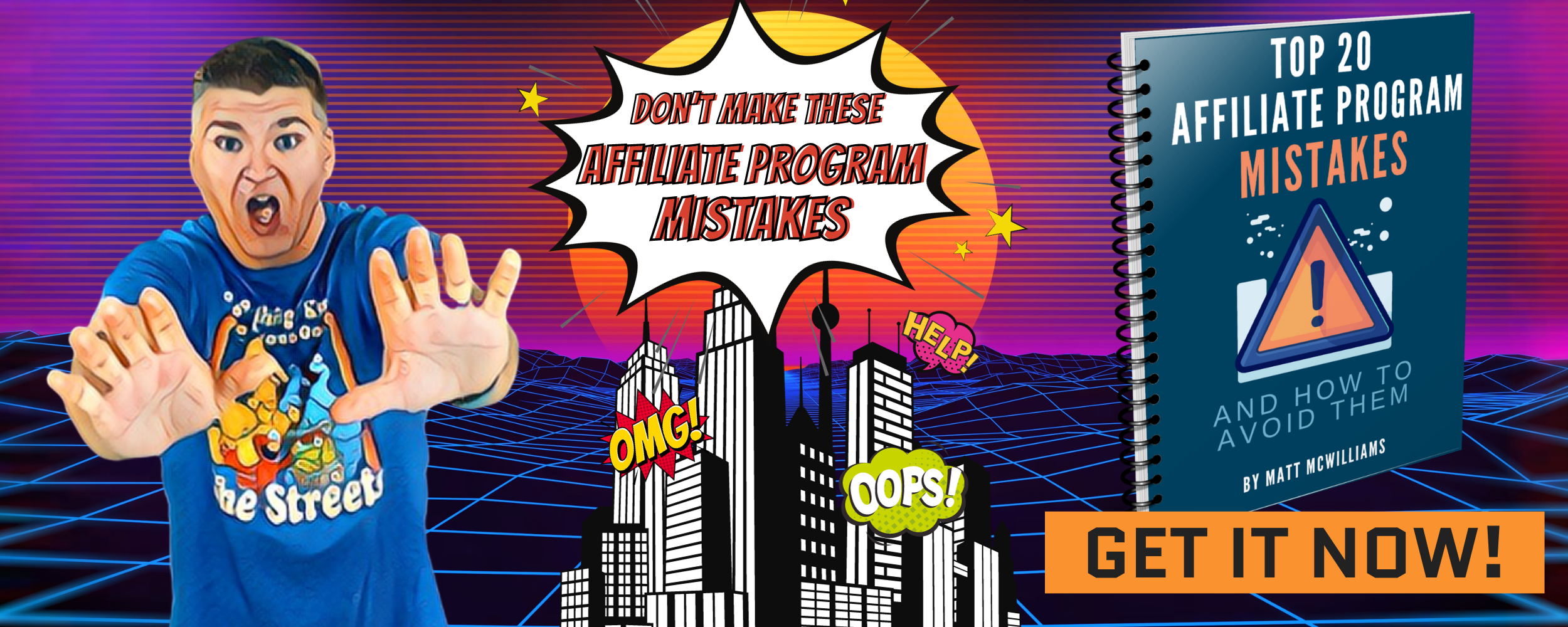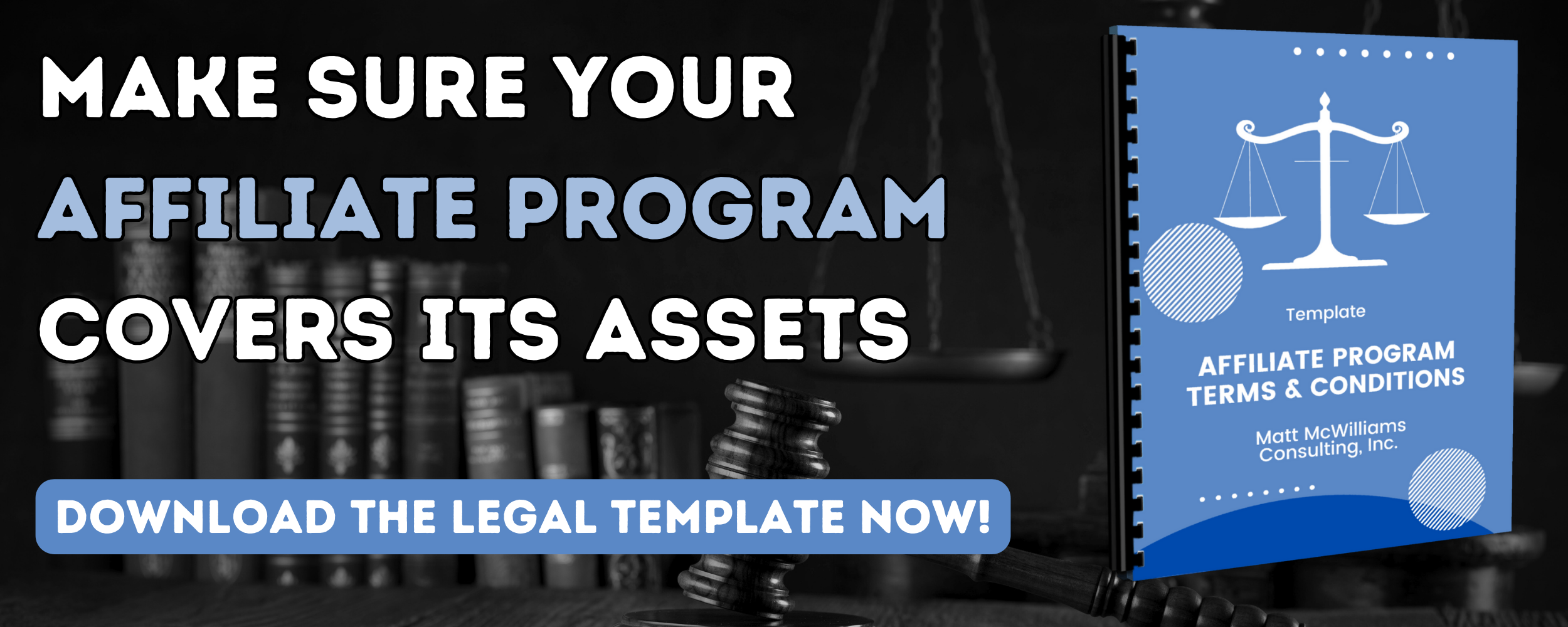You’ve done the hard work of finding affiliates and getting them signed up. Now, are you ready to ignite their passion and make them eager to promote? In this episode, I delve into the art of getting affiliates genuinely excited to spread the word about your products or services. Let’s dive in and learn how to get affiliates excited to promote like never before!
Click Here for The Written Transcript of This Episode
Need help activating your affiliates? Use my proven email templates for getting inactive affiliates in the game and making sales! Get them here!
LINKS MENTIONED IN THIS EPISODE
How to Co-Create Promo Plans with Your Affiliates
How to Close More Sales on the Final Day of a Launch
What Affiliates Need to be Successful
Text me at 260-217-4619
Don’t Miss An Episode – Subscribe Below
Previous Episodes of The Affiliate Guy
How to Build Trust and Credibility with Your Affiliates
How to Fail Your Way to Success with Omar Zenhom
How to Avoid the Most Common Affiliate Marketing Mistakes
Why Your Affiliate Program is Failing (And What to Do About It)
How to Build Strong Relationships with Your Affiliates
How to Get Affiliates Excited to Promote
You’ve done the hard work of finding affiliates and getting them signed up. Now are you ready to ignite their passion and make them eager to promote? Well, in this episode, I delve into the art of getting affiliates genuinely excited to spread the word about your products or services. So let’s dive right in and learn how to get affiliates excited to promote like never before.
So you’ve done all the hard work. The hardest work is finding affiliates and reaching out to them and getting them to sign up, getting them to commit to promoting you. How at this point, though, do we get them excited?
How do we get them genuinely fired up to promote you? You would think that money would be the best way to get affiliates excited, but as Dostoevsky wrote:
Man never acts from a single motive.
Motivation is more than money. In fact, this is something I learned from Dan Pink years ago: money is usually not even the number one motivator.
Whether we’re talking about employees, affiliates, your kids, money is not the number one motivator. It’s certainly important. We’re talking about employees, team members: it’s certainly in the top three, and it’s certainly a motivation to a point. Oh, “will you work for free just because you’re on a mission?” Well, no.
Now, there’s a point, though. If you make more than enough to survive on, like, okay, making $100,000 a year, making $120,000 usually isn’t that much of a motivator compared to other things.
So how do we motivate our affiliates?
How do we get them excited to promote? I want to share a bunch of ways to do that today.
1) Make them feel they are valued beyond just being an affiliate
It starts with making them feel that they are valued beyond just being an affiliate. In other words, build relationships. We talked about this about ten or twelve episodes ago. How to build relationships with your affiliates. This applies to any aspect of life you cannot motivate until you develop a relationship.
Teddy Roosevelt said,
People don’t care how much you know until they know how much you care.
Or Maya Angelou:
I’ve learned that people will forget what you said. People will forget what you did, but people will never forget how you made them feel.
We know these quotes. These are all quotes we’ve heard before.
Are we living them? Are we living those and making our affiliates feel valued beyond just being an affiliate? Do we value them as human beings?
Do we value them as friends? Do we value them as fellow entrepreneurs or business owners? Affiliates are very different from any traditional workforce.
They are driven by independence. Affiliates are generally not tied by contracts. They get to choose.
They choose: “Okay, I’m going to promote this affiliate program or I’m going to promote this one.” They choose what programs to drop.
They don’t have to notify you. They don’t have to tell you. I get it. In today’s world, like, an employee can just not show up. They can just stop working. But it’s not common, right? And it’s going to look badly upon them.
They can just stop promoting you and there’s no consequence to that. So they’re not like a traditional workforce.
There’s no way to possibly motivate with threats. We’ll talk about that later. They’re born free.
They will not put up with any type of top-down management, any type of controlling, or any type of directing. It’s why I actually hate the term “affiliate manager.” That’s not what we are, really.
And so this nature of an affiliate naturally influences affiliate manager behavior. The nature of affiliates makes it clear that affiliate managers who don’t develop relationships with their affiliates stand little chance of motivating them.
So number one thing, you’ve got to make them feel valued. Beyond just being an affiliate, beyond just being someone who makes you money, beyond being someone who just promotes you, make them feel valued. And I’ve talked about that before. Things like connecting with them on social media and engaging with them, knowing them, all those things we talked about in that episode about building relationships, that’s why that is so important, to build those relationships.
So that’s foundational that’s assumed that you’re making them feel valued. What do we do now?
2) Make them feel they’re part of a mission
The second thing is you have to make them feel they’re a part of a mission.
That’s why it’s so important when you get testimonials, when you get stories, share them with your affiliates. When people reach out to you and talk about how much your product or service impacted their lives, you tell your affiliates, especially if they’re really good stories, you share them with your affiliates. Make sure they see them because they feel like they’re a part of a mission.
If you got an amazing testimonial and you ran a company, you would share it with your employees, right? If you’re not, then you’re doing something wrong. I mean, there’s a reason why we have a Slack channel called “Testimonials.” I want that testimonials channel. I need the positive feedback. So when somebody says something about my book or when they say something about one of our products, I need to see those.
It’s fuel for me. Well, it’s also fuel for our affiliates because they want to know that what they’re promoting is making a difference in people’s lives. So make them feel like they’re a part of a mission because they are.
3) Make them feel a part of the process
Thirdly, make them feel like they’re a part of the process. And what do I mean by that? The process of what?
The process of the development of a product. Kind of like being a part of a mission. They’re a part of the process of the launch or a part of the process of the marketing. So sharing updates along the way. This particularly applies to launches because you might get an affiliate six months before the launch, and there’s nothing going on for six months.
How do I keep them engaged and just a little bit excited?
I don’t want to get them super excited four months out, but I want to keep them warm. I want to keep the pot on the back burner on low so it stays warm. So I share updates along the way. I ask them for input. We made sure that in addition to asking my audience, as I was getting affiliates for my book, I told them, like, I asked them first for input on cover designs, for input on layouts of the book, because I’m making them feel a part of the process. I asked for their input on the landing page.
I asked them for input on all kinds of things, and I made them feel a part of the process. I shared updates, just kind of random updates like, hey guys, boom, boom, boom, here’s what’s going on here, we finished this. This will be available soon. Just want to let you know I’m working on a swipe copy for you guys. They’ll be ready in a couple of weeks. And they’re a part of that process, so part of a mission and a part of the process.
4) Make them feel like their goals are achievable
The fourth thing is to make them feel like their goals are achievable. I’ve talked, I don’t know, 10, 15, 20 episodes ago about appealing to their greatness and setting those aspirational goals. But at the same time, I want to make them reachable.
If somebody has a list of 1200 people, unless it is like the most perfect list with a 90% open rate that’s perfectly targeted, they’re not going to sell 50 of our $500 course. They’re going to sell ten or even five. But I’m going to appeal to an aspirational goal that’s achievable of ten. If in the last promotion a year ago, they had seven sales and their list is roughly 30% bigger, a good goal might be 20. Especially if I know that they only kind of were like half in. They didn’t go all out. Okay? If they go all out, they could get to 14 or 15.
So I’m going to set the goal at 20. If I set the goal at 50, it’s not achievable, it’s not reachable. So how discouraging is that to them that I would set a goal of 50 and they look at it and go, “I can’t do that?” No, I want to make it achievable for them. And so the same is true in a promotion.
Let’s say it’s in a month, and they’re at 20 sales with ten days left, they’re on track for 30 sales. I want to say, “Hey, if you hit 40, you’re going to get this,” because 40 is achievable. If you’re at 20 two-thirds of the way through, it requires a little bit of extra effort. Yeah, but it’s achievable.
If on a launch. We know that roughly 40% of all sales happen on the last day. And if I really want to drive an affiliate and they’re at 15 sales, I tell them, hey, sales usually double on the last day. So for your target, you’re going to probably hit 30 if you hit 35, I’m going to pay them for those extra five sales. If you hit 35, I’m going to give you a $1,000 bonus or $5,000 bonus or whatever. And so I make that goal achievable. I can do 20 on the last day. I wouldn’t say 50. That would be triple your sales, more than triple your sales. That’s not achievable, but slightly over double, that’s possible!
So we want to make them feel they’re valued beyond just being an affiliate. Make them feel like they’re a part of a mission. Make them feel like they’re a part of a process. Make them feel like their goals are achievable. And we want to make them trust you. This is what the last episode was all about, so I’m not going to go into this one. But we want to make them trust you. If there’s no trust, there is no excitement. Simply put.
Now into the tactical things here to get them excited. Run short, frequent, and fun, exciting contests.
Nothing moves people like a deadline, but contests are pretty close. So if you want to know our best affiliate contests, just go to the show notes, and I’ve got a special page there, where I’ve got some bonus videos in detail on our top affiliate contests.
Okay, but to get your affiliates to promote more often, you need to do it frequently, so not just one contest all month. We have one contest whoop de do. Oh, the whole launch. There’s one contest, just the sales contest. Well, sales don’t happen till twelve days into the launch there, Sparky.
Not sure how much to pay your affiliates? Watch my free video tutorial on YouTube that walks you through step-by-step.
What are you going to do to get them excited before that? What if they don’t have an opportunity to really compete? How do we get them excited? Frequent, very short, 24 to 48 hours contests. Yes, you have an overall one. Okay, just saying you need more. So 24 to 48 hours over a weekend only, Friday only, Tuesday, Wednesday only.
And then we want to make them exciting and fun. So this might be a contest just for webinar registrations or just a contest for opt-ins today only, or a contest based on sales, maybe when sales are typically a little bit lower. So if you have a five-day open cart, we already know sales are going to be big on the first day and on the last day, and maybe your day before the last day, you have a live stream, so sales pick up then.
What about Wednesday? How about a sales contest for Wednesday when sales drop, or Tuesday and Wednesday when sales are typically low? This encourages people to promote extra because often just one or two emails extra is the difference between a very lucrative prize and nothing. I know I have done something irrational or perhaps a little crazy to try to win a contest, any sort of a contest, right? It’s ingrained in our nature.
So here are some examples of actual contests that we’ve offered. All right? These are real contests that we’ve run, and I’m actually going to read some of these and even include some of the language that we use to run the contest.
So we did one for webinar opt-ins. It was a two-day contest. It was the day before the webinar and the day of the webinar. First place was a Caribbean cruise for two! So about a $5000 – $6,000 contest! I think it was like an ocean view with the balcony and all that. It’s a very attractive prize. And then we had a drawing. So every opt-in you sent, you got one entry so you could send ten opt-ins and you were entered to win. So you had a chance and for that one, it was a MacBook Air for $1,000. And this is why we knew it would work with this client. We knew that the webinar converted.
So a Caribbean cruise for two at that time cost well, at that time, it cost like $3,000, but now it’d be like $5,000. And so a webinar lead was worth about $5 on average. So we’re paying the top partner who generated 1800 extra leads, about a dollar 65 per lead. That’s not bad. And then think about the person who finished. Second place was about 1600 leads. A big contest between these two. Third place was like 1100 leads. Fourth place was just under 1000.
Well, they didn’t win a prize, but they were trying to win this prize. And then we gave every single affiliate a chance to win something that they really wanted. So it was a random drawing, and we saw a lot of affiliates who normally might only send 50 leads, send 100. When you multiply that by dozens of affiliates, it resulted in thousands of more opt-ins. If you look at the launch the year before, we had 7200 people registered for the webinar.
When we ran this contest, we had over 17,000. Now, a little bit was due to growth, but if you looked at other parts of the launch, they did not do two and a half X, they were up about 50% to 60%. So workshop leads were up. It was like 11,000 compared to like 8000 the year before. All the other stats during the launch were up 40 to 50%. Webinar registrations were up 150%.
We did another contest for Michael Hyatt’s. Five Days to Your Best Year Ever Launch. He had an assessment that he ran, and we knew the assessment was going viral. It was converting really well, but weekends tend to suck for launches. So we ran a weekend assessment contest. Like, first place was $2,500. So this was opt-ins/people who registered. We did. Second place was $1,000 and 3rd place was $500. And then we did a drawing. Anybody with 25 plus opt-ins, we had two winners of $250 each, and we announced it at a very specific time. This is important.
We didn’t announce it on Thursday. We didn’t announce it Friday morning because we announced it Friday, early afternoon, about 02:00 pm Eastern. Here’s the deal. This is why, we didn’t want people to get this alert on Friday morning. Go, oh, I’m going to move my email today to Saturday. We wanted this to add opt-ins to the total launch, not just shift them from Friday to Saturday and Sunday. So I announced it at about 2-2:30 on Friday.
I mentioned this video and all that. The special page we put together that’s got the video and top contest stuff. It’s on that page, right? It’s on that page. I now say like 2:30, because I want it to be late enough that they’ve probably already mailed on Friday. And maybe only a couple of affiliates who were planning a Friday late afternoon email would hold off until the weekend, but early enough that they’re not like, I’m done for the weekend.
On a lot of Fridays, I’m done by three. I call it quits at about 3:00. So if you send an email at 5:00 on Friday, I’m not going to see it until Monday. Well, can’t jump in then. So we saw a 57% increase in opt-ins over the weekend compared to projections. We spent $4,250. It was directly responsible for an additional $70,000 in sales! So we spent $4,250 and made a profit because we paid commissions on that 70,000. Still, we made an extra $35,000 – $40,000 from that weekend contest.
So clearly this worked. Another big contest we ran was first-day sales. Simply put, you want your affiliates to come out of the gate strong on open-cart day. So you’ve got to be willing to spend a little bit of money to get people excited and energized. So we’ve done tons of different first-day sales. First prize, anyone with one sale entered into a drawing. You could do the top three. Typically, I kind of like doing the top one and then a drawing because I don’t want people going for second place. I don’t want people getting content.
I want them going all out on day one. But I also want to say, hey, if you make one sale, you at least stand a chance of winning a prize. Another one is that anyone can win if you send more emails contests like anyone who sends an email during a specific period of time is entered into a drawing to win a prize. This contest is open to everyone. All you have to do is send an email. All you have to do is send an email and you’re entered to win.
This encouraged smaller affiliates to mail an extra time or two, and even some of the medium-sized ones sending that extra email. If an affiliate who’s making two sales, if they send an extra email, what does that do? That’s not the right question to ask it’s. What if 250 affiliates send an extra email? What if that only produced an extra 75 sales of a $500 product? That’s $37,500 extra, and I’m going low.
It probably produced the one that we ran for Michael Hyatt’s. I know what it did because we saw how much it lifted sales. The bigger affiliates know they’ve already got their plan. They’re already mailing four, five, six times in the last day. They know how it works, these smaller affiliates. Maybe it’s their first affiliate promotion, and they sent an email at the beginning of the launch, maybe another one here, another one there, right? And they planned one email on the final day, early afternoon. But then we encourage them. Hey, we encourage them the day before.
This is how you win this contest. And we make the prizes very attractive. And then all of a sudden, they go from two sales in the first four days of open cart to, they make six on the last day. They three X’ed their last-day sales. And it’s all because they mailed more. And when you get literally a couple of hundred affiliates to do that, I think on the low end, we probably produced measurably 300, 400 extra sales the first time I ever did that contest, that was huge! It was literally six figures that it was responsible for. So this contest absolutely works.
So again, short, frequent, fun, exciting contests. The next tactical thing is just educate your affiliates. Teach them why mailing more works, or why emailing at a specific time works better. When we’re running launches, I often share why mailing on the weekends is a good idea. And I purposely send this out again, mid-morning, late-morning, early afternoon on a Friday. So they’re more likely to take action. I mean, remember, this is all about getting affiliates to add an extra email that they weren’t planning on sending.
So I send a very simple email that just says why you should mail this weekend. And then I explain to them why mailing a little bit extra over the weekend produces results, and I just educate them. Help your affiliates. Help them understand why you want them to mail more. When they know the why, they will take action. You can share with them data about why to email more on Cart Close Day.
We’ll put a link to that in the show notes. You can share the data with them. This data is coming from a third party, I have no investment in your affiliates making more sales. When I share with the affiliates, that the programs that we’re running, I kind of have a dog in the fight, right? And I have a horse in the race, so they might somewhat, sometimes go, well, he’s saying that, no, you can share this link with them, and I have no dog in the fight.
So when you share this data with them about why mailing more on Card Close Day actually works, it’ll definitely help you. And one of the things that we’re providing in our Find Affiliates Now Course, for example, is Affiliate Education templates. These are templates you can use to educate your affiliates. Things like why to mail more on Cart Close Day. We got stats and examples on how to use swipe copy, how to use your opt-in list, how to promote different types of promotions such as webinars, book launches, assessments, and workshops, et cetera, et cetera. Right? Best practices for promotions.
I’m just giving you some ideas here and again in our course, Find Affiliates Now. This is all in there, but how to put together bonus packages that convert sales, how to promote on different mediums like email and blog posts, podcasts, direct messages, YouTube, social media, you name it. How to go big on your promotions with confidence, how to mail to unopened, how to use live chat, and how to do phone calls with prospective buyers. We educate them. What separates the top converters from the mediocre converters? We share with them how to get over the fear of unsubscribes because it’s a mindset thing.
We talk about how to close more sales. This is all a part of our new Find Affiliates Now course. You can learn more about that at findaffiliatesnow.com, and we’ll put that link in the show notes there. But my point here is just to educate your affiliates. And I gave you some ideas, things that you can do to educate them. A lot of it centers around mindset and tactics. How do I do this? How do I promote a webinar? How do I put together a bonus package? How do I promote via a blog post or YouTube? How do I make phone calls with prospective buyers? And again, in the course, we give you like, the script to send to them and the script that they can use to generate those phone calls. And then the mindset side. How do you get over the fear of unsubscribes? And we combat those things with data and some psychology. So educate your affiliates.
Next, set up one-on-one personal promotion plans with your affiliates. One of the best things you can do to get your affiliates to mail more often is to create a personal promotion plan with them. It’s also how you get them to post more on social media. This is some of our secret sauce when we run affiliate programs for clients. And I’m going to put a link to a video in the show notes.
But here’s the gist. You meet with affiliates one-on-one before the promotion. You craft a custom promotion plan that works with their calendar. I found that when I meet with a partner one-on-one, they tend to agree to at least a few extra emails, more than they had previously planned on sending. And I’ve talked about this so many times. Robert Cialdini, right, from his book, Influence. The Principles of Commitment and Consistency. And it means that what people commit to, they stick to.
So you jump on, zoom, skype, Google Meet, or whatever you’re using. You listen to this say five years from now, there’ll probably be some other platform. You go through the promotion plan spreadsheet with them. You work through each of the ideal situations and adjust your personal plan to meet their needs. So they say, we recommend mailing on Monday, Wednesday, Thursday, and Saturday. And they go, I don’t mail on Thursdays. I’ve got other stuff going on on Thursdays. I don’t send emails out because blah, blah, blah, cool. Then mail Monday, Wednesday, Friday, and Saturday.
Don’t make the same mistakes I’ve made with my affiliate programs. Learn my top 20 affiliate program mistakes…and how to avoid them!
Once you have their plan set, have them commit to it. Then you email them a copy of the spreadsheet. You thank them for their commitment. We even put their name on it, and it’ll say like Robert Smith’s commitment plan. And more often than not, they will stick to that plan. If anything, they will add to it during the promotion, but rarely, if ever, do they subtract from it. And I have personally done these plans with people whose products I’m promoting. And when I’ve fallen short in the middle of a promotion, I miss something. I’ve added extra emails to make up for it.
When I promise someone that I’m going to mail eight times, by gosh, I’m going to mail eight times at a minimum. That is the power of creating these personalized commitment plans with your affiliates. So if you want the template for those, just check the show notes and you can grab a free copy of the template. mattmcwilliams.com/affplan. Just go to that link. We’ll send you the sample promo plan that’s worked so well for us.
Now I’ve kind of interchanged a couple of words. Promo plan, commitment plan. We don’t call them promo plans anymore. We ran a launch a few years ago and learned something that completely changed the way that we do these things. We ended up getting 1.7 more emails from each affiliate and we just changed one word. Instead of promo, we call them a commitment plan.
So we do these one-on-one commitment plans with the bigger affiliates, and then we give our smaller affiliates generic mailing plans. When I said meet one on one with affiliates, you might be freaking out thinking, I can’t do this with hundreds of people. I don’t want to do this with somebody that’s got a list of 700 people. It’s just not worth it. And as much as you might want to meet with every single affiliate one-on-one, the reality is you can’t.
So what can you do for them? Well, typically in a launch, if we have 500 affiliates promoting, I’ll meet with between 15 and 25 one-on-one. For everyone else, we give them generic mailing plans that they can use to plan their promotion. A couple of things we’ll do first is we’ll provide what we call ABC mailing plans. I’m going to put a link too, but then I share a video walkthrough of how we put them together to get maximum results from our affiliates. That’s 15 minutes we don’t have time to get into today, but I’m going to put a link to that in the show notes (How to Co-Create Promo Plans with Your Affiliates). Just make sure you go watch that. And I talk about our ABC plans. I share a video walkthrough of how we put them together and all that stuff.
But here’s a quick overview. ABC stands for A, all in or aggressive, B, balanced, C, conservative. Our objective with these plans, much like with the personal promotion plans, is to get your affiliates to commit to some level of participation. You’re looking to get them to commit to a minimum number of emails as I mentioned earlier. And so what I found is that affiliates who commit to the conservative level, the C, will often move up to the balanced or even sometimes the all-in level. As the promotion progresses, they start seeing the competition, they start seeing prizes.
Maybe they do well on one and maybe they win a random drawing. And then suddenly they go from C to A or at least B. They want to, quote, unquote, dip their toe in the water, right? See, is this promotion going to work for me? I’m not sure about this. And then if it looks like it’s working early on, they’ll get more aggressive as they go. But the key here is to get them to commit to something on the front end. So make it very easy to commit to the conservative level. So the conservative level, it’s like two to four emails, maybe a couple to unopens, and maybe a couple more things here and there.
This gets them just to commit, like, to a very easy commitment level, right? Especially when maybe they’re new. This is the old foot-in-the-door technique, right? It’s like, hey, Dad, can I borrow the keys to go out to dinner with a friend? Okay. And then like, yeah, well, can we go to this? Then you keep going and going. Just think about this. If you’ve ever agreed to do something small only to end up doing something much larger, like the foot-in-the-door technique again. Robert Cialdini this is Robert Cialdini 101.
It’s in the book “Influence”, where he talks about that. That is like the ABC plans in action. So we have the A, the all-in that’s for the people that are already going to go all-in. Cool. You give them the plan. The B is kind of in between the conservative and the all-in. And we do this for basically everybody else. So we set up those one-on-one commitment plans for the bigger ones, and then we give the smaller affiliates generic ABC mailing plans.
From a tactical perspective, the next thing you need to do to get your affiliates really excited is you got to build up each promo milestone individually with as many affiliates as possible. And typically this is going to be your top 20 to 50 affiliates. Depends on how big your program is.
If you have 30 affiliates, it might be all of them. You want to tell them where they stand. That means sharing with them how many opt-ins they have, how many sales they have, where they stand in relation to others, how far are they from first or another position, how many sales they need to get to the next guaranteed prize level, and all the things like, whatever it is, find something that motivates them.
I mentioned earlier when I talked about using those contests, using those contests and how making them feel like their goals are achievable and things like that, well, this is part of that. They’re not going to be motivated to try to get to first place if they’re in second place, and they’re 82 sales behind going into the last day. So you want to say, hey, you’re only four sales away from third. Like, you need to keep that second place. And the trick here is to find something that is practical, like I said earlier, for them to achieve.
So let’s say the first place has 100 sales. It’s two days until the end of the launch, and the top affiliate has like I said, the top affiliate has 100 sales. The affiliate in 14th place has nine sales. It’s not practical that number 14 is going to catch up to number one, but it is, however, very practical. They could catch up to number ten. So focus on how far they are from number ten and push them to get there. If they aren’t in a position to achieve a leaderboard position, focus on guaranteed prizes.
So, for example, I’ll send them an email that says, hey, did you know you’re only I just want to let you know you’re only seven sales away from winning the 13-inch MacBook Pro. Hey, you’re only nine sales away. You’re at ten sales now or you’re at eleven sales now. Nine more wins you $2,000. And when you build up these milestones, remind people where they stand and show them how to get to the next level. It’s very encouraging. And what we have found time and time again, is every time we send one of these emails, the response is literally something like awesome, Matt, I’ve scheduled another email for later today.
Wouldn’t you love to get an email like that? That’s what works. And then to go kind of next level with this, do it with two affiliates at the same time to create competition. So if you know that these two affiliates know each other, even if you think they might. I’ll give you an example. I won’t mention the names of the affiliates, but two affiliates that were really high up on Ray Edwards’ leaderboard. They were number one and number two. I just happened to run the stats when they were dead-tied.
And I remember the number 1431 leads. This was with, like, 10 hours left in the competition. I mean, dumb luck. Like, one of them could have easily been five ahead or below. But I caught this screenshot at the exact time that they were tied, and I sent it to both of them, and I was like, oh, my goodness, you guys are tied. And they were both like, okay, where am I now? They’re texting me privately. They’re trying to do everything they can to win. Part of it was the money. There was a lot of money at stake, and part of it was just that pride. The trash talk back and forth between them really kept it going.
So those are some ways to get your affiliates excited. Now, how do you keep your affiliates promoting long term? Ultimately, if you just get them excited one time, if they’re a one-hit wonder, it’s not a big deal. It’s not going to help you go for the long term. If you do everything I suggested already, they will want to promote again, but only if you keep in touch. So keep going behind the scenes.
Remember, I said earlier, make them feel a part of the process. Keep making them feel a part of the process. If you decide today to do something that’s going to impact them in nine months, let them know today. Just give them a quick two-minute video. Let them know of a change you made. Keep sharing those testimonials if you can.
We always look, anytime we get a testimonial. One of the things I do is I go check out and see was there an affiliate who referred them. Now, a lot of times they’ll say, So and so sent me, and I love those the best because then I can send that to the affiliate and be like, hey, look what they said. But a lot of times they don’t say so and so sent me this. So I’ll go look them up in our system. It takes me 20 seconds, and I’ll find who sent them, and then I’ll share it with all affiliates, perhaps, but I will specifically share that in a DM or a text or a one-on-one email with the affiliate who referred them.
Keep them updated just frequently. Again, frequently when you’re eight months out from a launch, for example, is every two to three weeks. It doesn’t have to be a ton. You don’t want to get the water boiling an hour before you need it, or in this case, eight months before you need it. But you do want to keep it warm and maintain those relationships with your top affiliates.
It could be your top 300-400. Connect with them on social media. I learned this. I think I mentioned this a few episodes ago in the relationships one, but one of the little tricks I learned, and I wish I could give credit to who I learned this from, because I don’t remember. I wish I could say, I learned this from so and so, and they deserve all the credit for this idea.
When I’m in line, I’m waiting for our food. I’m by myself, and I’m just waiting for something. And this only happens a couple of times a week, but that’s all it takes. When I have those three to ten minutes where I have nothing to do, I don’t get on my phone and check Twitter, I don’t read a magazine, I don’t check email. I don’t do anything other than just start reaching out to some people.
I just reach out to a few people. I just start scrolling through who have I not talked to in a while? And I’ll just shoot them a text. Hey, I’m just thinking about you. Hope everything’s all right. I’m intentional with that time because I only have 10 to 20 minutes like that every week. So I intentionally use it. Sending physical mail, sending them something in the mail that just lets them know, like, hey, I was thinking about you. If I’m at a store and I see something and I know that this would be a hit with a particular person. Sometimes it’s a pair of socks, sometimes it’s a book, whatever, I will buy that thing and I’ll send it to them.
If you know somebody and they’re an author, you see their book out and about. Unless they’re literally a very successful published author where it’s not that big of a deal. I know if people see my book out and about, it’s a big deal because, yes, it’s in pretty much every Barnes and Noble nationwide, and it’s in a couple hundred smaller bookstores. But I mean, literally, my book, as big of a deal as I made about it. It’s in less than 2000 stores in the entire country. I think it’s in, like, 1400 or 1500 stores.
It’s not in a ton of stores. And it’s pretty rare for somebody to see my book out and about. So when somebody does, it’s a big deal to me, and I love it. I think it’s the coolest thing ever. Send them a quick picture, hey, look what I found. Better yet, buy the book and send them that. Let them know you bought the book. It’s a pretty cool thing to do for somebody.
Support them in any way you can. Their launches, their programs, sign up, support them, send them some traffic. The biggest thing is just don’t go dark. Don’t go dark on them. Keep in touch with them. And then I mentioned this earlier, but never, ever motivate from the negative, threatening to remove somebody from a program or to lower their commissions. I see this so often.
Motivating by Fear does not work with affiliates. It absolutely does not work. Never, ever raise your right hand. I swear I state your name. Swear to never motivate in the negative. All right? It doesn’t work with your kids. Doesn’t work with team members. It doesn’t work with affiliates more than anybody, because, like I said earlier, they’re independent contractors. Oh, you’re going to lower my commission? Screw you. I’m just going to leave. I’m not going to promote.
I did that with an affiliate program recently that I’m a part of. We’re only making a couple of sales a month for them because I don’t really go all out to promote them. They’re like, we’re going to lower your commissions. And I’m like, fine. I’m going to change my Pretty link. Talked about that a few episodes ago. It’s really easy because I use Pretty Link to just be like, I’m going to create a page that says, here’s why I no longer promote this program. And I did. I found something better for my audience.
But the catalyst was them threatening to lower my commission if I didn’t make more sales. That’s just a horrible way to try to motivate somebody. So any single one of these strategies could significantly increase the number of times that your affiliates mail, how much they promote, and how excited they are. When you use them together. This is the thing. When you use them together, you can see exponential. You could see explosive growth.
So start stacking these one on top of each other. It starts, if you remember, all the way at the back at the beginning of this episode, it starts with making them feel they’re valued beyond just being an affiliate, making them feel they’re a part of a mission and a part of a process, making them feel like their goals are achievable, making them trust you. Then we went into contests and education of your affiliates.
Make sure that your affiliate program has a solid agreement (AKA Terms & Conditions). To make things simple, grab my template here!
Those promotion plans, actually commitment plans, and then giving those generic commitment plans to the smaller affiliates, building up each promo milestone and then keeping them long term. Again, it comes back to relationships and making them feel like a part of a mission in a process. A couple of times today I mentioned Find Affiliates Now, just real quick, if you’re interested, go check it out findaffiliatesnow.com.
You’re going to learn how to identify the right affiliates, how to reach out to them, how to get prospective affiliates to say yes, how to set up your affiliate program, and ultimately how to get affiliates to go all in promoting you. So much of the stuff that we just didn’t have time to get into today because we’re running a little bit long.
All that stuff I talked about, the education and all those things. We’ll have the templates for you in there. And these are short daily lessons, the course takes five days. Daily action item. You’re not going to spend more than an hour a day. This is not about a bunch more information and filling you with more information. We have enough information out there. This is about taking action and getting results. We got all the templates and examples and all the resources in there.
So check that out: Findaffiliatesnow.com and I would love to hear from you about what your biggest takeaway is from this episode. Which of these strategies are you most excited to put into practice to get your affiliates excited to promote you? Shoot me a text at 260-217-4619. I would love to hear from you. And as always, last thing, if you haven’t yet, subscribed, make sure you hit that subscribe button.
Whether it be Apple, Google, Spotify, or wherever you’re listening, hit that subscribe button. Because the next episode I’m going to talk about is a really fun one. Talking about how a friend of mine, Laura Wardlaw, finished in the top 20 and only her second affiliate promotion ever. It’s a really cool case study that we did with her. And then the next episode after that, we’re going to be talking about how to start an affiliate program. We’re talking about what do you do the first 30 days.
How do you actually start an affiliate program? If I were starting an affiliate program from scratch today, what would I do the first 30 days? That’s our next episode! And we got so many more good ones coming up this year. So make sure you hit subscribe so you don’t miss it. I’ll see you on the next episode with Laura Wardlaw.
Questions?
Text me anytime at (260) 217-4619.
Or…check out some of my free reports to help you get on the right track:
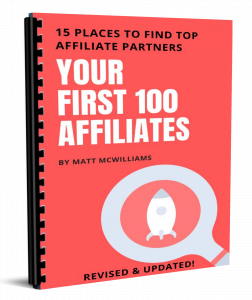 |
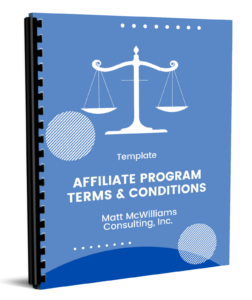 |
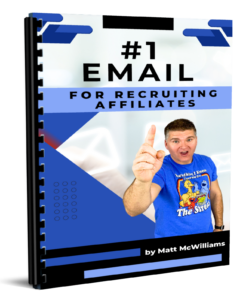 |
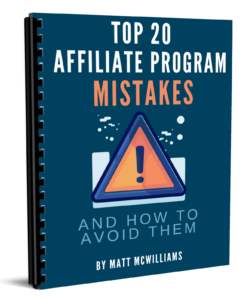 |
 |
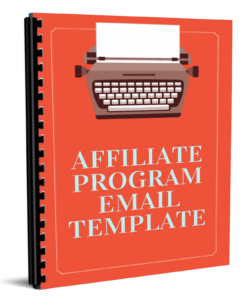 |
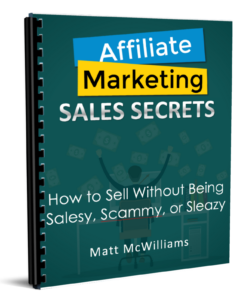 |
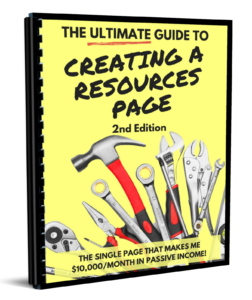 |
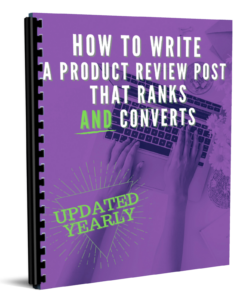 |
